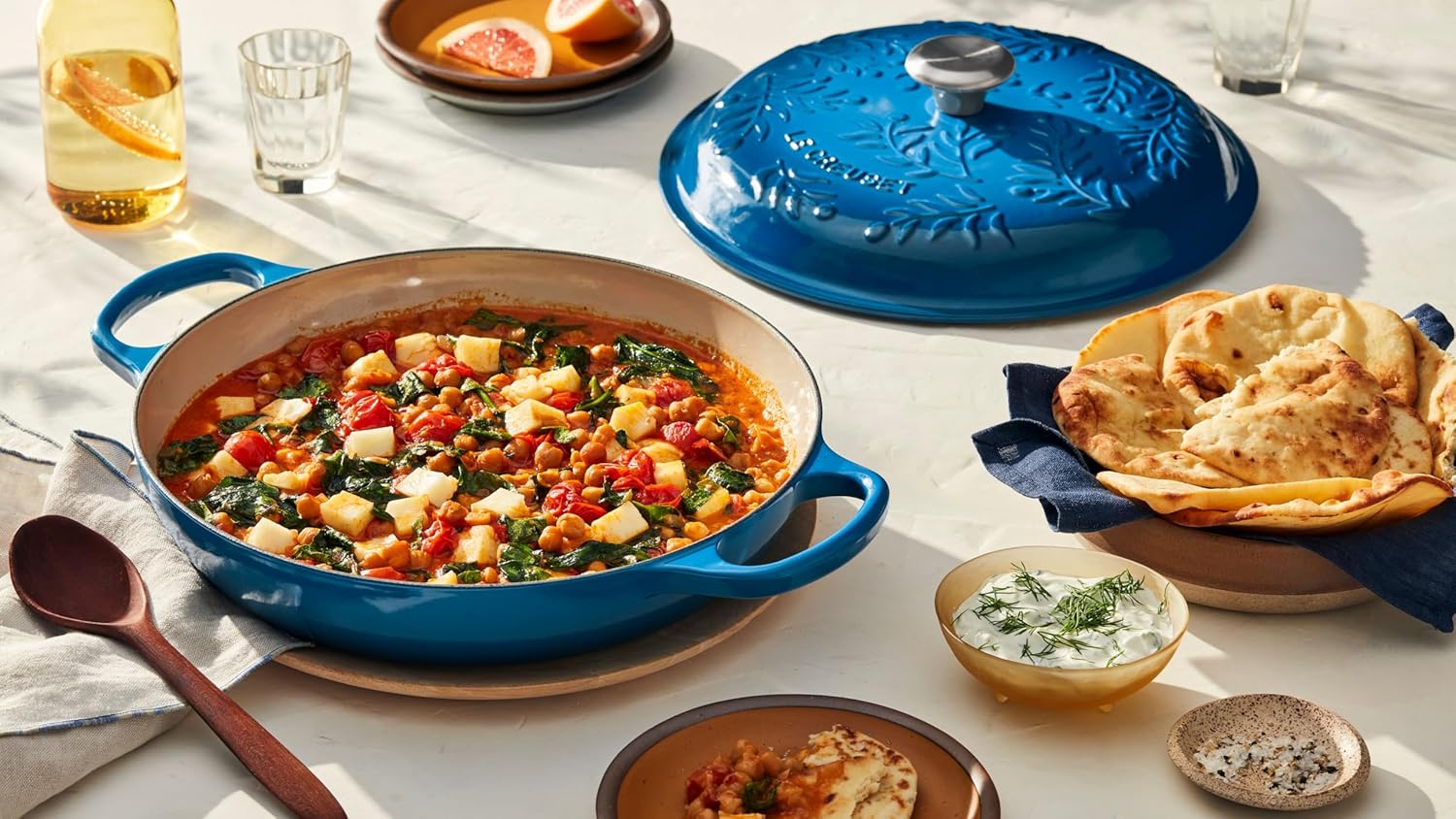The question of whether you can store food in a cast iron braiser often arises among cooking enthusiasts and professionals alike. This versatile piece of cookware is beloved for its ability to handle a variety of cooking tasks, but its suitability for food storage is a topic worth exploring. In this article, we will delve into the intricacies of using a cast iron braiser, discussing its benefits, potential drawbacks, and best practices for food storage.

Understanding the Cast Iron Braiser
A cast iron braiser is a kitchen staple, known for its durability and excellent heat retention. It is designed for browning, braising, and simmering, making it a versatile tool in any kitchen. However, when it comes to storing food, several considerations must be kept in mind to maintain the quality of both the food and the cookware.
The Benefits of Using a Cast Iron Braiser
The main advantage of a cast iron braiser is its ability to distribute heat evenly, which is crucial for achieving perfect cooking results. Its heavy construction allows it to retain heat for a long time, making it ideal for slow-cooked meals. Moreover, many cast iron braisers come with a lid that fits snugly, helping to lock in moisture and flavor.
Potential Drawbacks of Storing Food in Cast Iron
While a cast iron braiser is excellent for cooking, it may not be the best choice for storing food. The primary concern is that cast iron can react with acidic foods, such as tomato-based dishes, which may lead to a metallic taste or discoloration. Additionally, prolonged exposure to moisture can cause the cast iron to rust, potentially damaging the cookware and affecting the food’s quality.
Best Practices for Storing Food in Cast Iron Braiser
If you decide to store food in a cast iron braiser, it is essential to follow certain guidelines to ensure the longevity of the cookware and the safety of your food. Here are some tips:
1. Cool the Cookware Before Storing
Always allow the cast iron braiser to cool down to room temperature before storing food in it. Placing hot food in the refrigerator can lead to condensation, which may promote rust formation.
2. Use a Barrier
Consider using a barrier between the food and the cast iron surface. You can line the braiser with parchment paper or transfer the food to an airtight container for storage. This will help prevent any potential reactions between the cast iron and the food.
3. Avoid Storing Acidic Foods
As mentioned earlier, acidic foods can react with cast iron, leading to undesirable flavors. It’s best to avoid storing such foods in the braiser. If you must store them, do so for a short period and ensure the braiser is well-seasoned.
The Importance of Seasoning
One of the key factors in maintaining a cast iron braiser is proper seasoning. Seasoning creates a protective layer on the cookware, preventing rust and reducing the likelihood of food sticking. Regular seasoning is essential, especially if you plan to store food in the braiser.
Steps to Season a Cast Iron Braiser
To season your cast iron braiser, follow these simple steps:
- Clean the braiser thoroughly with warm water and mild soap.
- Dry it completely with a towel or by placing it on low heat.
- Apply a thin layer of vegetable oil or shortening to the entire surface.
- Place the braiser upside down in an oven preheated to 375F (190C).
- Bake for about an hour, then allow it to cool in the oven.
For more detailed instructions on how to care for your braiser, check out this prevent rust on cast iron.
Alternatives to Storing Food in a Cast Iron Braiser
If you are concerned about storing food in your cast iron braiser, consider these alternatives:
1. Use Glass or Ceramic Containers
Transferring food to glass or ceramic containers can be a great option for storage. These materials do not react with food and are safe for use in the refrigerator and microwave.
2. Stainless Steel Cookware
Stainless steel is another excellent choice for storing food. It is non-reactive and durable, making it ideal for both cooking and storage.
3. Enamel-Coated Cast Iron
Enamel-coated cast iron braisers are an alternative worth considering. The enamel coating prevents direct contact between the food and the iron, reducing the risk of reactions and making them suitable for storage.
Conclusion: Making the Right Choice
In conclusion, while a cast iron braiser is an invaluable tool in the kitchen, it may not be the best option for long-term food storage due to the potential for rust and reactivity with certain foods. By following the best practices outlined above, you can safely store food in your braiser for short periods. However, for longer storage, it is advisable to use alternative materials such as glass, ceramic, or enamel-coated cast iron.
For further reading on using a braiser effectively, visit this guide on using a braiser.

FAQ
1. Is it safe to store leftovers in a cast iron braiser?
While it’s possible to store leftovers in a cast iron braiser for short periods, it’s important to avoid storing acidic foods and to ensure the braiser is well-seasoned to prevent any reactions.
2. How can I prevent my cast iron braiser from rusting?
To prevent rust, ensure your cast iron braiser is thoroughly dried after washing and regularly seasoned. Avoid storing food for extended periods to minimize moisture exposure.
3. Can I store soup in a cast iron braiser?
It’s best to transfer soup to a non-reactive container for storage. If you must store soup in the braiser, do so for a short time and ensure the braiser is well-seasoned.
This article contains affiliate links. We may earn a commission at no extra cost to you.

